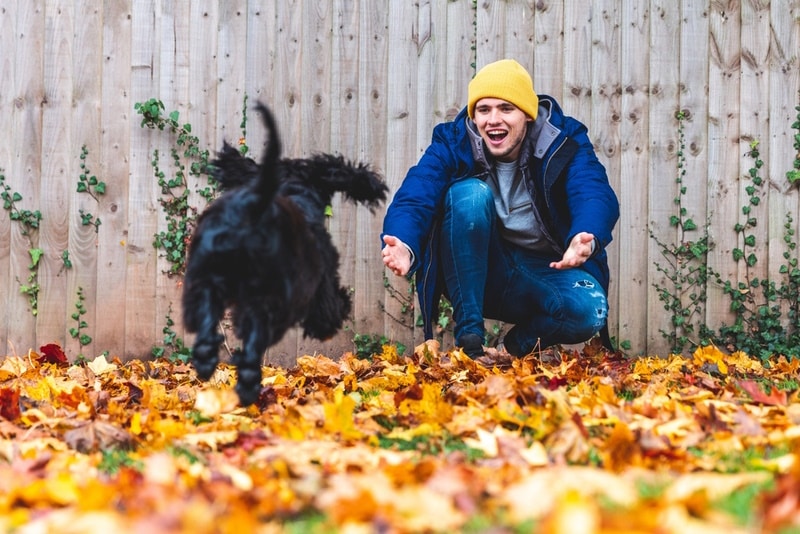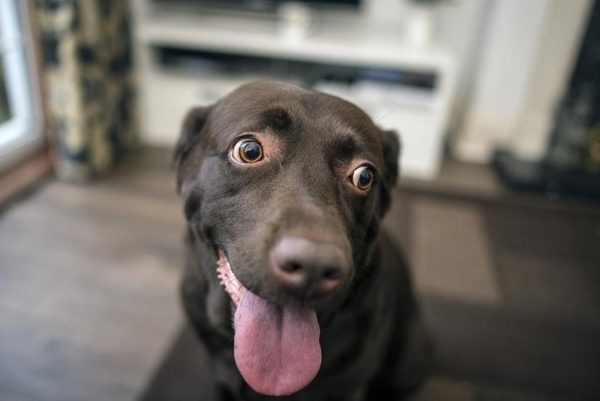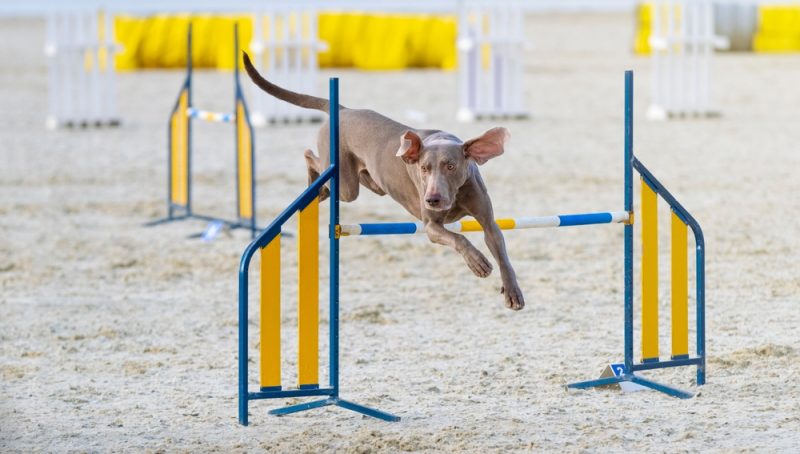In this article
View 2 More +A newly raked leaf pile is an irresistible autumn staple that few dogs can pass up. As you find yourself surrounded by fall foliage, the urge to take the plunge is undeniable for both your pup and you. The good news is, you can absolutely let your dog cannonball into that crisp sea of leaves, provided you proceed with caution.
Allowing your dog to jump in piles of leaves may seem harmless. And some dogs really enjoy it. But, while that pile of brown leaves might seem like a perfectly safe, cushioned landing, there are certain perils that owners need to be aware of.
Below, we discuss the risks associated with allowing your dog to jump freely into piles of leaves and outline steps you can take to mitigate those dangers.

The 5 Dangers of Dogs Jumping into a Pile of Leaves
1. Physical Dangers
Unless you’ve diligently combed through the pile of leaves before your dog leaps in, you can’t be sure what’s underneath. There could be sharp or hard objects under the top layer. Tree stumps, rakes, and even broken glass could be hiding underneath, and if your dog jumps in any of these, it can lead to serious injury.
Obviously, if you’ve created a pile of leaves, you should have a better idea of what’s underneath, and if you’re piling the leaves up, as well as making sure they’re fresh and non-toxic leaves, make sure you remove the rake and get rid of any potentially harmful objects that might be underneath. You should also try to ensure the ground underneath is relatively level, as an uneven landing could be enough to cause a sprain or other injury.

2. Toxic Leaves
Some leaves are toxic to dogs. Oak and horse chestnut tree leaves are among some of the potentially dangerous leaves that can cause sickness if ingested.
Leaf piles also typically harbor other parts of plants and trees. You may find poisonous berries, conkers or acorns, and it only takes a second for a dog to consume one. No matter how diligently you watch your pup, you may not notice what goes on in the middle of a leaf pile.
3. Mold
Leaf piles are damp and dark, which makes them the ideal breeding ground for mold. Molds will be more prevalent in older piles of leaves and reproduce through the release of microscopic spores into the environment. Mold can cause gastrointestinal upset if ingested, respiratory signs if inhaled, and it can also be a trigger for allergies.
Signs of a mold allergy typically include skin itchiness, which can lead to severe itching. Other symptoms include red, watery eyes. Unfortunately, you can’t always tell by looking at a pile of leaves whether it contains mold, but the best approach is to wash your dog to get rid of any mold spores to reduce the risk of bad reactions

4. Fleas, Ticks, and Other Parasites
We commonly think of fleas as living on cats, dogs, and wild animals, such as hedgehogs and foxes. But flea eggs, larvae, and pupae can live in damp, shady, hidden areas like leaf piles. Similarly, they can also harbor ticks and other parasites that you don’t want your dog contracting.
Fleas and ticks are tiny, and it is very difficult to spot them, so looking at the pile of leaves before you let your dog in won’t guarantee avoidance.
5. Spiders, Snakes, and Other Threats
Larger living threats can also exist in leaf piles, ranging from spiders to snakes. Most snakes like solitude, and they stay hidden under rocks or in crevices and other gaps. Some will hide in piles of leaves. They are also well camouflaged against fallen leaves. Similarly, spiders like Black Widows and Brown Recluses will hide in leaf pile,s and you may not see them even after they’ve bitten. Black Widows have enough venom to kill small dogs.
If you think your dog has been bitten by a spider or snake, seek veterinary help as soon as possible. Time is of the essence. If you see the offending creature, be prepared to describe it to the vet, as this will help ensure the proper antivenom is administered. Also, be aware of the species of snakes and spiders that reside in your area and know what to look for to help lessen the risk of coming into contact with them.


What to Do If Your Dog Jumps in Leaves
If your dog does take the plunge before you can inspect the pile for any potential risks, the first thing to do is to get them out. Make sure they don’t show any signs of physical injury and ensure they don’t eat any of the leaves or vegetation in the pile.
Be cautious when removing your pup to avoid any encounters with potentially dangerous snakes or spiders. When you bring your dog home, it’s a good idea to give them a bath to wash away pests, mold, and dirt that may be embedded in their fur and paws.
Watch for signs of allergic reactions, as well as symptoms such as vomiting and diarrhea. If your dog exhibits any of these, seek veterinary attention as soon as possible.
Why Do Dogs Like Jumping in Leaves?
There are several reasons why some dogs like jumping in leaves. First, it is a fun activity. Many of us enjoyed jumping in leaves when we were young children, and it’s the same for dogs. They like the feeling, the sound, and the joy of leaping in.
It may also be a scenting activity. If the leaves have a strong smell, whether it is of the trees themselves or of any wild animals that might have been in that pile of leaves, your dog may want to envelop itself in the smell or transmit its own smell onto the leaf pile. If you see your pup rolling around and rubbing scent glands especially found around the neck, into the leaves, this is likely what is happening.
If you’ve seen your dog jump in leaves in the past and laughed or encouraged it, your dog may be repeating the action in the hope of enjoying the same reaction, making it a learned activity. And if you have multiple dogs, one may have picked it up from another.


Final Thoughts
Some dogs love to run and jump in piles of leaves. While it can be safe for them to do so in piles of leaves you’ve intentionally gathered, there are some potential hazards with random, uninspected piles or leaves in public places.
In addition to physical hazards such as sharp objects that may be hidden underneath, there are also threats from fleas, ticks, spiders, and snakes. Furthermore, some leaves and foliage can be toxic. Mold is also commonly found in piles of old and decaying leaves.
If your dog has been playing in leaves, give them a good wash and look for signs of allergic reactions and reactions to toxic substances. And seek veterinary assistance if you do see any possible problems.
Otherwise, happy jumping!
Featured Image Credit: Sundays Photography, Shutterstock


















